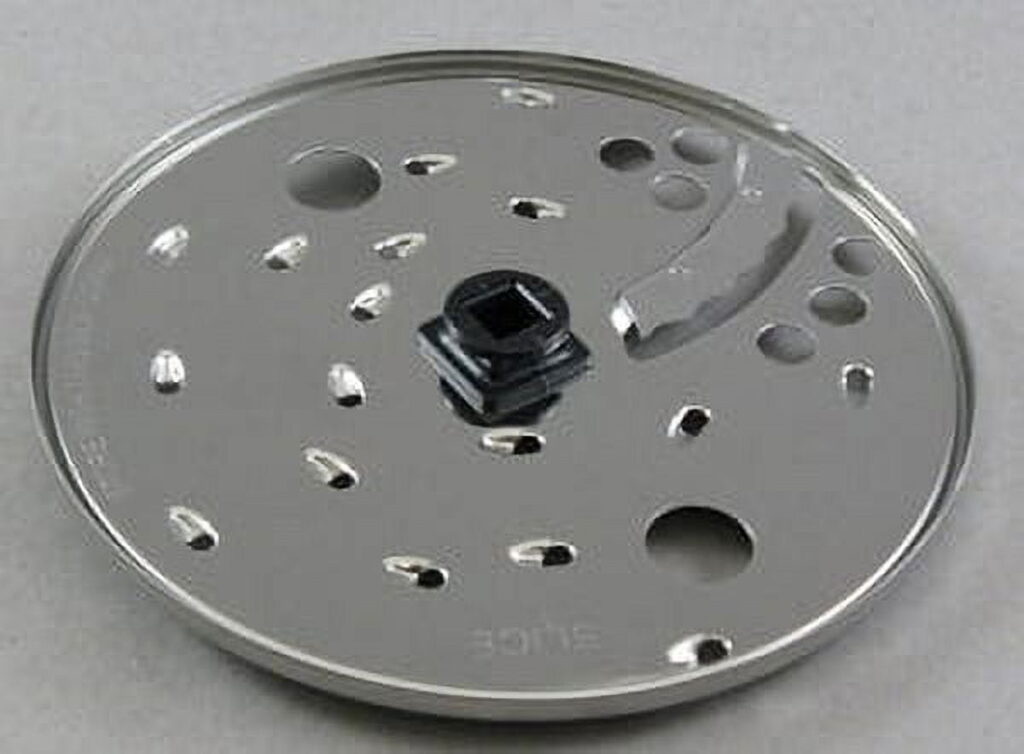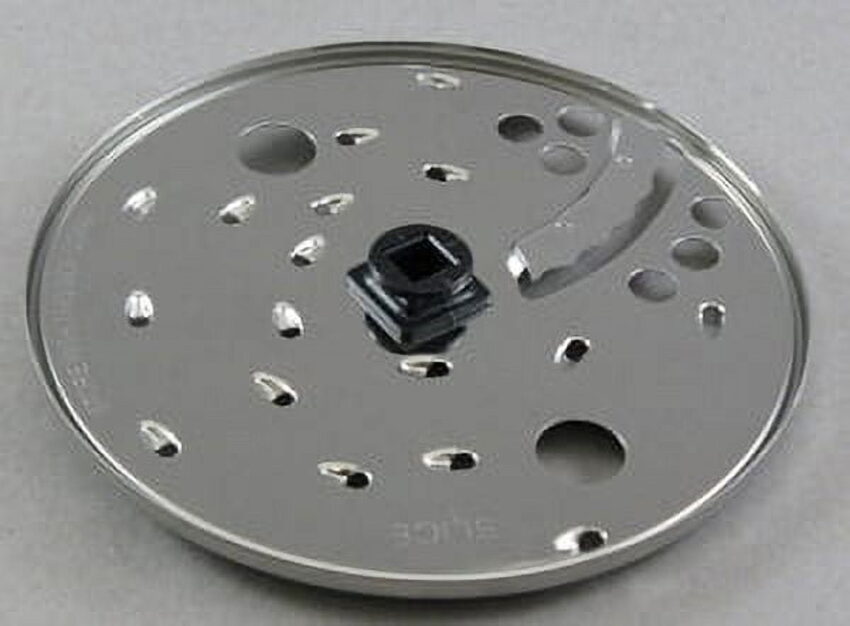
Unlocking Culinary Efficiency: A Deep Dive into Shredding Disks for Food Processors
The modern kitchen is a testament to innovation, and at the heart of many culinary endeavors lies the food processor. A versatile tool, the food processor transforms raw ingredients into culinary masterpieces with remarkable speed and efficiency. One of the key components that unlocks this versatility is the shredding disk. This seemingly simple attachment can dramatically reduce prep time and expand the range of dishes you can create. Whether you’re a seasoned chef or a home cook looking to streamline your meal preparation, understanding the nuances of shredding disks for food processors is essential.
Understanding the Shredding Disk
A shredding disk is a circular attachment designed for food processors to quickly and evenly shred various foods. Typically made of stainless steel for durability and hygiene, these disks feature precisely engineered blades or grating surfaces. The food processor’s motor spins the disk at high speeds, allowing ingredients fed through the feed tube to be efficiently shredded and collected in the work bowl.
Types of Shredding Disks
While the basic principle remains the same, shredding disks come in various types, each designed to produce different shred sizes and textures:
- Fine Shredding Disk: Ideal for creating finely grated cheese, breadcrumbs, or finely shredded vegetables like carrots for salads.
- Medium Shredding Disk: The most versatile option, suitable for shredding cheese for gratins, cabbage for coleslaw, or potatoes for hash browns.
- Coarse Shredding Disk: Perfect for creating coarsely shredded vegetables for stir-fries, chunky coleslaw, or shredding potatoes for latkes.
- Adjustable Shredding Disk: Some high-end food processors offer adjustable disks, allowing you to customize the shred thickness to your exact preference.
Benefits of Using a Shredding Disk
Investing in a food processor with a shredding disk offers numerous advantages:
- Time Savings: Manual shredding is time-consuming and labor-intensive. A shredding disk can accomplish the same task in seconds, freeing up valuable time in the kitchen.
- Consistency: Achieving uniform shred sizes by hand is challenging. Shredding disks ensure consistent results, leading to even cooking and improved presentation.
- Versatility: From cheese and vegetables to fruits and even nuts, shredding disks can handle a wide variety of ingredients, expanding your culinary possibilities.
- Reduced Waste: By quickly processing large quantities of ingredients, shredding disks can help reduce food waste.
- Ease of Cleaning: Most shredding disks are dishwasher-safe, making cleanup a breeze.
Choosing the Right Shredding Disk
When selecting a shredding disk for your food processor, consider the following factors:
- Compatibility: Ensure the shredding disk is compatible with your specific food processor model.
- Material: Opt for stainless steel disks for durability, hygiene, and resistance to corrosion.
- Size and Shape: Choose a disk size that suits the capacity of your food processor’s work bowl.
- Shred Size: Select disks that offer the shred sizes you use most frequently. Consider an adjustable disk for maximum versatility.
- Ease of Use: Look for disks that are easy to install, remove, and clean.
Tips for Using a Shredding Disk Effectively
To maximize the performance and longevity of your shredding disk, follow these tips:
- Prepare Ingredients: Cut ingredients into appropriately sized pieces that fit comfortably into the feed tube.
- Use Gentle Pressure: Avoid forcing ingredients through the feed tube. Use the food pusher to gently guide them towards the disk.
- Maintain a Steady Speed: Operate the food processor at a consistent speed for optimal shredding.
- Clean Thoroughly: Wash the shredding disk immediately after use to prevent food particles from drying and becoming difficult to remove.
- Store Properly: Store the shredding disk in a safe place to prevent damage or injury.
Creative Uses for Your Shredding Disk
Beyond the basics, shredding disks can be used for a variety of creative culinary applications:
- Homemade Hash Browns: Coarsely shred potatoes for delicious and crispy homemade hash browns.
- Gourmet Salads: Finely shred carrots, beets, and other vegetables for vibrant and flavorful salads.
- Cheese Platters: Quickly shred a variety of cheeses for impressive cheese platters.
- Homemade Breadcrumbs: Transform stale bread into fresh breadcrumbs for coating cutlets or topping casseroles.
- Vegetable Fritters: Shred zucchini, carrots, and other vegetables for healthy and delicious fritters.
The Science Behind Shredding
The effectiveness of a shredding disk lies in its design and the physics involved. The sharp blades, rotating at high speed, exert force on the food, causing it to separate into small, uniform pieces. The angle of the blades, the speed of rotation, and the pressure applied all contribute to the final texture of the shredded food. Different types of shredding disks are designed with specific blade angles and grating surfaces to achieve different shred sizes and textures.
Maintaining Your Shredding Disk for Longevity
Proper maintenance is crucial for extending the life of your shredding disk. Always clean the disk thoroughly after each use to prevent food buildup, which can dull the blades and affect performance. Avoid using abrasive cleaners or scouring pads, as these can scratch the surface of the disk. If food becomes stuck in the blades, use a soft brush or toothpick to gently remove it. Regularly inspect the disk for any signs of damage, such as cracks or bends, and replace it if necessary. [See also: Food Processor Maintenance Tips]
Addressing Common Issues with Shredding Disks
While shredding disks are generally reliable, some common issues can arise. One frequent problem is food getting stuck in the feed tube. This can usually be resolved by cutting the food into smaller pieces or using the food pusher more effectively. Another issue is uneven shredding, which can be caused by dull blades or inconsistent pressure. To prevent this, ensure your shredding disk is sharp and apply even pressure when feeding food into the processor. If the motor seems to be struggling, reduce the amount of food being processed at one time. [See also: Troubleshooting Your Food Processor]
The Future of Food Processing and Shredding Disks
As technology continues to advance, we can expect to see further innovations in food processing and shredding disks. Future models may incorporate features such as self-sharpening blades, adjustable shredding speeds, and integrated weighing scales. We may also see the development of specialized disks for shredding specific types of food, such as herbs or spices. The goal will be to further enhance the efficiency, versatility, and ease of use of food processors, making them an even more indispensable tool in the modern kitchen. The shredding disk is a vital component of this culinary evolution.
Conclusion: The Indispensable Shredding Disk
In conclusion, the shredding disk is an indispensable attachment for any food processor owner. Its ability to quickly and efficiently shred a wide variety of ingredients makes it an invaluable tool for saving time and expanding your culinary repertoire. By understanding the different types of shredding disks available, choosing the right disk for your needs, and following proper maintenance tips, you can unlock the full potential of your food processor and elevate your cooking to new heights. So, embrace the power of the shredding disk and transform your kitchen into a culinary powerhouse.
